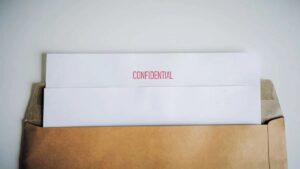 My forte as a journalist was reporting bad news. Whistleblowers, inside sources, gossip–I loved it all. I got a tip, tracked it down, and then the newspaper splashed a big, nasty headline on my story. Sometimes, even my editors would have been surprised about how I got my scoops.
My forte as a journalist was reporting bad news. Whistleblowers, inside sources, gossip–I loved it all. I got a tip, tracked it down, and then the newspaper splashed a big, nasty headline on my story. Sometimes, even my editors would have been surprised about how I got my scoops.
The strategic press leak, if used properly, can be an excellent proactive crisis management tool. By effectively beating the media to a negative story, a company can limit the media’s ability to delve deeper into a story, saving the company from a potential public relations disaster.
A few years ago I was writing a story about a lawsuit the Recording Industry Association of America (RIAA) was on the verge of filing. I made the mistake of telling the public relations rep at the RIAA that I would be publishing the story on my web site after midnight. I was rather certain that the lawsuit was not going to be filed that day; I had internal documents, dated just a few days earlier, that outlined the RIAA’s legal strategy.
To my surprise, CNET’s news web site had already gotten wind of the lawsuit by the time I published the story. CNET’s story even contained the same statement the RIAA had given me earlier in the day. Recognizing a number of factors–the journalist who wrote the story, the timing, what my sources told me–I concluded that the RIAA had issued a strategic press leak, sending the news to CNET. The RIAA may have actually filed the lawsuit earlier than planned in an effort to beat back what was sure to be negative coverage from my publication.
Was the strategy effective? Certainly. The first and most read story about the lawsuit came from CNET, a respected media outlet. The story presented the RIAA’s message in a way the organization could easily spin. By offering the story to a competing media outlet as a strategic press leak, the RIAA effectively took the wind out of my sails. If you can play one media outlet off another, you can control the news flow.
A proactive approach to the strategic press leak is seeking out a sympathetic media outlet or individual journalist to break the bad news to the public. While my stories may say, “sources close to the situation,” those sources are sometimes the very people who go on the record with a “no comment.” I asked one public relations consultant — we’ll call him Jack — why he routinely used the strategic press leak as a crisis management tool.
“We know the news will get out there eventually, so if we can control the initial media coverage and limit the damage, it makes sense to give up the story rather than waiting for someone to come to us with it,” Jack told me via email.
“Bad news is a given for any large company. At the same time, sometimes bad news is woefully misinterpreted. One reporter sees a blaring headline, another sees nothing more than a news brief. We can’t control what the media says, but sometimes we can control how they get their information. For the sake of accuracy, it sometimes behooves us to just go to someone like you with the news.”
Jack said that the strategic press leak plays an important role for his company because, due to a number of factors, it is often the focus of negative media coverage. He said that the decision is made by his team and the company’s top executives sign-off on the measure before he proceeds. But he admits that sometimes he goes about the strategic press leak on his own.
“I feel confident that I know what’s best for the company when it comes to media relations and PR. Reporters have sources, so sometimes I act as both the source and the spokesperson. It’s not an attempt to trick the reader. Sometimes it’s just difficult to put out a press release announcing something negative so leaking it first lessens the blow.”
As effective as the strategic press leak can be as a crisis management tool, it can backfire. Reporters are quick to question motives of any leak, especially one coming directly from a company. Used wisely however, Jack says that the strategic leak fulfills the main point of his job.
“The most important part of my job is protecting the company’s image. If I have to accomplish that by going under the radar, so be it.”
This article, written by Ben Silverman, originally appeared in PR Fuel (https://www.ereleases.com/prfuel), a free weekly newsletter from eReleases (https://www.ereleases.com), the online leader in affordable press release distribution. To subscribe to PR Fuel, visit: https://www.ereleases.com/prfuel/subscribe/.